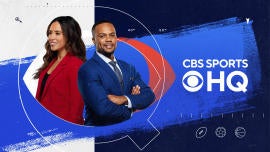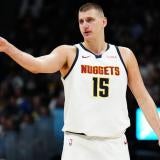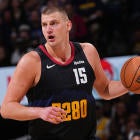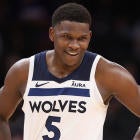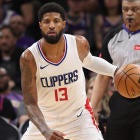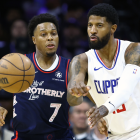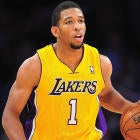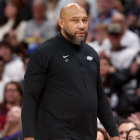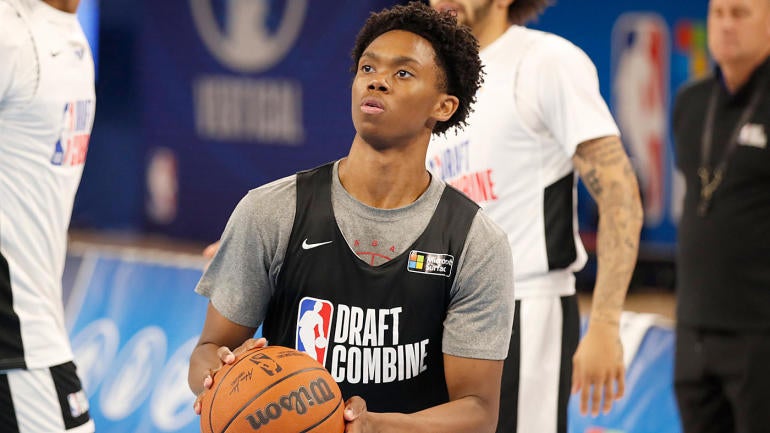
With marked advancements in scouting networks around the globe, more data than ever before and a constant stream of reports about what teams are thinking, there are few real surprises in the NBA Draft anymore. A player might go a bit higher or lower than expected, but the home run swings out of nowhere are much less common than they were in years past.
We got one this summer, however, when the San Antonio Spurs selected Joshua Primo -- the youngest player in the draft -- out of the University of Alabama with the No. 12 overall pick. None of our three experts at CBS Sports had Primo in the first round on their mock drafts, let alone the lottery, and even Primo admitted he was surprised he went so high.
"Going that high wasn't something that I was -- I don't know if I was ready for that," Primo said at his draft party. "I didn't realize it was going to be that high. But I'm glad it's with the Spurs. I've always wanted to be a Spur. I told my agent when I first got into this process, 'That's where I want to be.' And it ended up working out that way, so it was great."
In 30 games at Alabama, Primo averaged 8.1 points and 3.4 rebounds, while shooting 43.1 percent from the field and 38.1 percent from downtown. Most analysts saw the pick as a reach, and it was widely regarded as one of the worst of the draft. CBS Sports' Gary Parrish gave it a C+, which was tied for his worst grade of the first round.
"This is the biggest reach of the draft so far," Parrish wrote on draft night. "But Primo is only 18, and he is a shooter. Even so, I'd probably go a lower grade if this were a different franchise than San Antonio. He simply has not had the track record of other prospects still available in terms of his production in college. It's not what I would have done, but we'll have to see how it plays out."
So why did the Spurs go all-in on Primo? Let's take a closer look at his lone college season with the Crimson Tide and his first few summer league outings.
Offense
On the offensive end, Primo's standout skill in college was his shooting. He shot 38.1 percent on 3-point attempts last season, and was one of the most efficient spot-up players in the country. His 1.222 points per possession on those plays put him in the 93rd percentile, per Synergy Sports.
As a young freshman on a veteran Alabama team, Primo was understandably not a primary offensive option, and mostly hung out in the corner or on the wing as a floor spacer. He took to that role well, thanks to his quick release and the fact that he was always ready to shoot:
Another impressive aspect of Primo's shooting was his range. He was willing and able to launch from well behind the college line, and should have no trouble transitioning to the longer pro distance:
When he tried to put the ball on the deck, things got a little shaky. Every so often he would make these super impressive drives that really caught your attention, in large part because of his impressive body control in the air:
However, in classic young player fashion, he was just as likely to try and do way too much. Whether it was barreling into the waiting defense or flipping up a truly ridiculous shot attempt, he seemed to sometimes attack the basket without a plan:
San Antonio clearly believes there's more to his game than just shooting, however, as nearly 60 percent of his offensive possessions in summer league have been as the pick-and-roll ball handler. Much like in college it's been hit or miss when he tries to get to the rim, but he has flashed some smooth pull-up shooting off the dribble:
In terms of playmaking there really wasn't a whole lot going on in college since he was mostly a spot-up shooter. And when he did look to create, it was usually for himself. He finished the season with 25 assists and 41 turnovers in 30 games. On the rare occasions he did try to facilitate, it was pretty similar to his own shot creation. There were some moments of brilliance that caught your eye, but a number of baffling decisions mixed in.
But at the combine Primo impressed with his playmaking, and in his first few summer league games with the Spurs he has had the ball in his hands a lot more. That suggests the Spurs are going to try and develop those skills. So far, however, it's been a little rough. The ideas are there, but he just hasn't been executing the passes. In two games he already has nine turnovers.
Defense
Primo has a chance to be a very solid perimeter defender. Physically, he measured 6-foot-5 in shoes at the combine with a 6-foot-9 wingspan, so he has the size and length to guard multiple positions.
When he's guarding the ball he moves his feet well and does a good job shutting off driving lanes. He's also a little bit stronger than he might look and just isn't easy for opponents to get past. Perhaps most importantly, he defends without fouling. In college he only had 50 fouls in 674 minutes of action.
Off the ball, you can really get a sense of his agility. Even though he's a bigger guard, he has no problem chasing guys around and navigating screens. With shooting becoming a bigger and bigger part of the game, that's going to be a valuable skill at the next level.
Obviously this isn't to say that Primo is perfect on that end, but there really is a lot to like for such a young player.
Conclusion
It's easy to understand why everyone considered this pick a reach. Primo wasn't even the best player on his own team in college, and if you were just ranking players in this class by a combination of talent and readiness for the NBA on draft night, there's no chance Primo would have checked in at No. 12.
At the same time, you can understand what the Spurs were thinking. To win in this league you need shooting and defense on the perimeter, and Primo checks both of those boxes. He was also the youngest player in the draft, and potential is always enticing. If he had stayed in college, there's a good chance he would have been a projected lottery pick next year, and this is clearly a bet that he has a few more levels he can reach.
We probably won't know for sure if it was a good idea until a few years from now, but you can't totally fault a team with a proven track record of player development taking a swing with a late lottery pick.


